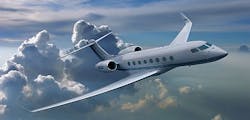Trade group outlines financial hardships of business aviation, as government sets aside $1 billion in business jet subsidies
WASHINGTON, 1 June 2012. Global deliveries of business aviation aircraft fell sharply from 2006 to 2010, as the U.S. business jet manufacturing industry faces tightened credit, uncertain government funding for research and development (R&D) for general aviation, and new entrants into the industry, say officials of the U.S. International Trade Commission (USITC) in Washington.
Demand for very light and light business jets, furthermore, were the hardest hit during the recent recession, USITC officials said in a report to the U.S. House Was and Means Committee entitled Business Jet Aircraft Industry: Structure and Factors Affecting Competitiveness.
Very light and light business jets represent the markets in which U.S. business aircraft producers are most active, USITC officials say. The report covers 2006-2010, with data from 2011 as available, for business jets with as much as 50,000 pounds maximum takeoff weight.
Meanwhile, the U.S. National Business Aviation Association (NBAA) in Washington -- the trade organization representing companies that rely on general aviation aircraft like private jets -- has come out in support of the USITC report, saying it confirms the critical importance of business aircraft manufacture to America’s industrial base.
"This new report underscores the fact that business aviation is an essential industry, strengthening America’s manufacturing base, fostering economic development and serving as an indispensable tool for thousands of companies trying to operate in a fiercely competitive global marketplace," says Ed Bolen, the NBAA's president and chief executive officer.
"We hope the study serves as a reminder to Congress and the Administration that government actions can directly impact the future of this great industry, and that policymakers will advance proposals that promote business aviation instead of impeding it," Bolen said in response to the USITC report.
Three of the world's six leading producers are headquartered in the U.S., USITC officials point out -- Cessna Aircraft Co. in Wichita, Kan.; Hawker Beechcraft Corp. in Wichita, Kan.; and Gulfstream Aerospace Corp. in Savanna, Ga.
Still, the other three business jet manufacturers -- Bombardier Aerospace in Dorval, Québec; Dassault Falcon Jet Corp. in Saint-Cloud, France, and Embraer SA in São José dos Campos, Brazil -- have substantial U.S. operations, officials say. Bombardier, for example, owns Learjet Inc. in Wichita, Kan., and Embraer operates the Embraer Executive Jets facility in Melbourne, Fla., where the company is building Phenom 100 light business jets.
From 2006 to 2010, the U.S. and European business jet markets still had the largest number of business jet deliveries, despite declines in total deliveries. At the same time, business jet deliveries grew in China, India, and Russia. Prospects for the continued growth in business jet deliveries to these markets may be limited, however, by inadequate airport infrastructure and regulatory and tariff concerns.
There is some good news on the business jet front, however, President Obama this week signed a law that reauthorizes the Export-Import Bank. The includes $1 billion in U.S. government subsidies for jet manufacturers, which have experienced a steep decline in demand in recent years.
While government spending for technology research and development can be important for many industries, the business jet sector, has had the least government research spending among aerospace sectors globally, the USITC report says.
For more information contact the U.S. International Trade Commission online at www.usitc.gov, or the NBAA at www.nbaa.org.
Follow Avionics Intelligence news updates on Twitter

John Keller | Editor-in-Chief
John Keller is the Editor-in-Chief, Military & Aerospace Electronics Magazine--provides extensive coverage and analysis of enabling electronics and optoelectronic technologies in military, space and commercial aviation applications. John has been a member of the Military & Aerospace Electronics staff since 1989 and chief editor since 1995.



